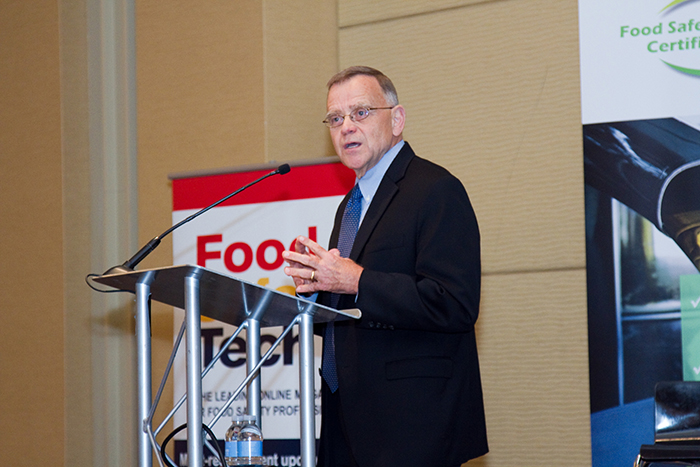FSMA: Biggest Challenge is Preparation, Outbreaks Still to Come, Says FDA

FSMA isn’t about zero risk but rather minimizing the hazards, said Michael Taylor, FDA’s deputy commissioner for foods and veterinary medicine at the opening of the Food Safety Consortium conference yesterday. “We have hundreds of thousands of businesses that are subjected to something that they weren’t before,” said Taylor. “The reality is, we’re still going to have outbreaks this year and the next year.”
In his first public speech since three final FSMA rules (on produce safety, foreign supplier verification, and accredited third-party certification) were filed on the Federal Register last week, Taylor shared some of the highs of the formation of the regulation as well as the challenges that are to come with implementation. “Many of us who were involved in the process 20 years ago didn’t imagine we’d get here today,” he said.
Right now FDA is looking at the big picture challenge of preparing the agency and industry, and actually getting the work done. Taylor called the implementation challenge “enormous”, thanks to the significant scale of the food system, and said the import piece of the regulation will take the most hands on deck. The ultimate goal of FSMA is real-time prevention versus reaction, and the regulation will require a lot of change within FDA. According to Taylor, the agency is revamping its internal management processes, along with its training and orientation programs, which also includes food safety culture training. Other activities include restructuring the inspection and compliance approach by realigning its field force to have fully specialized teams of inspectors.
One of the challenges that industry sees is the mindset shift in investigators from a resolutions approach to a systematic approach in assessing systems. When asked how FDA will get investigators to this level, Taylor admitted he was a lot more worried about the issue than he is now. The district folks in the front line are enthusiastic about the new approach and feel empowered by FDA’s new mission, he said. And while he didn’t want to be a Pollyanna about the extent of the effort, FDA knows that the agency workforce will not be 100% aligned on day one of implementation and is managing the process with this awareness.
Voluntary compliance is key, and while the weight of ultimate accountability stands on the shoulders of food and beverage companies, success cannot happen without collaboration with FDA. “We are convinced we’ll get 90% of the job done by working with those who are committed to doing the right thing,” said Taylor. “When that fails, there are other ways to deal with that issue.”
All images by amyBcreative photography.